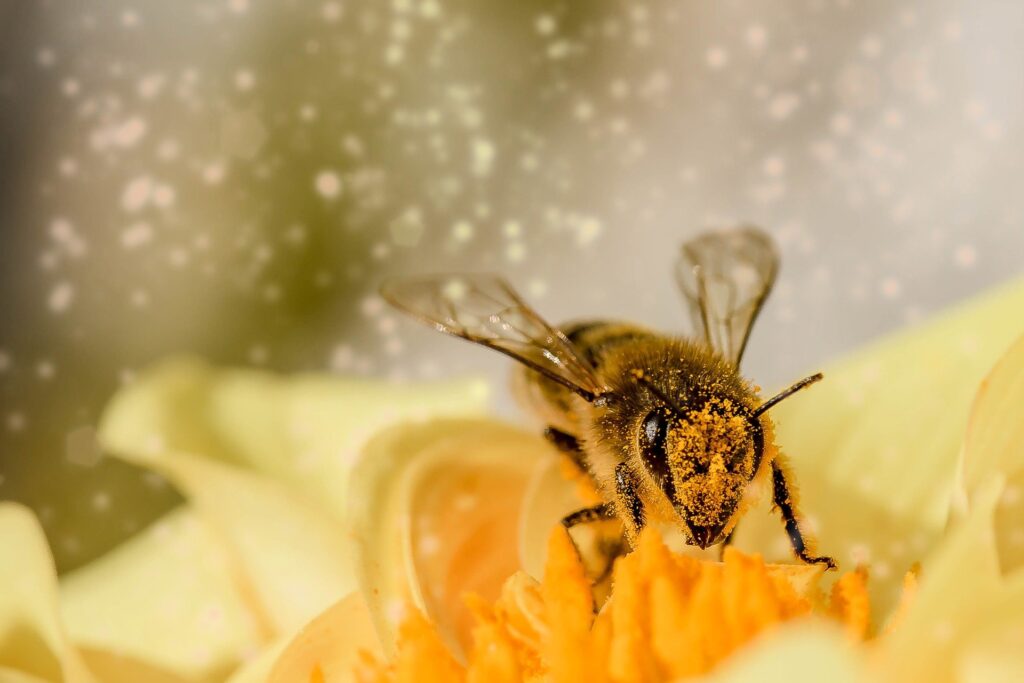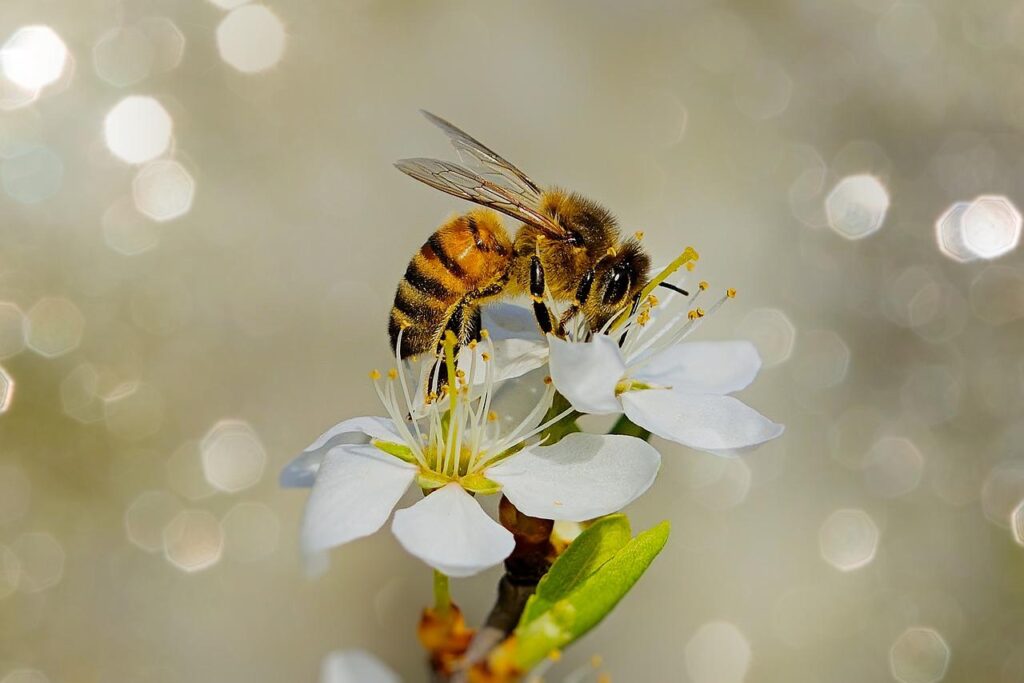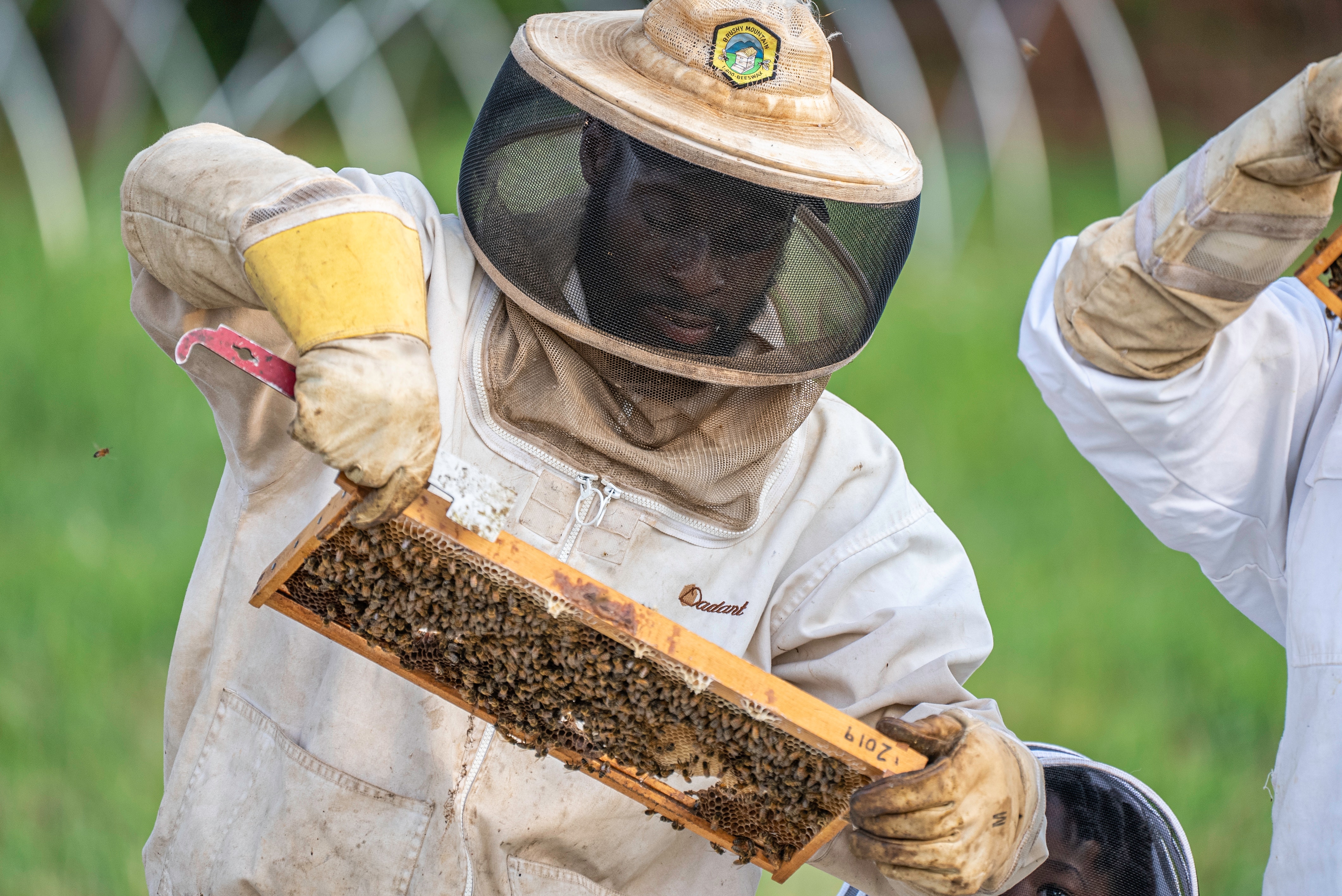Bee Music
For the Love of Bees (2010, revised 2019) for Piano and Narrator
For the Love of Bees is a six-part suite. It was originally composed for Dr. Margaret Lucia in a solo piano version with four parts [Honeybee Works] in 2010. Rubin expanded the piece in 2019 at the request of Sandrine Erdely-Sayo, director of the Piano on the Rocks International Festival, and added a narrative. The idea for the piece was generated by her growing awareness of hive declines due to Colony Collapse Disorder, climate change, parasites and other causes. As Rubin learned more about bees, including interviewing experts at the US Department of Agriculture, she also learned more about their social behavior and their critical role as pollinators. The narrative is also available in Spanish (Por El Amor de Las Abejas.)
For each section, Rubin used some of the striking characteristics of bees as a natural metaphor along with a particular pianistic technical challenge. Each section also explores a particular compositional/harmonic issue, in the manner of the traditional etude. In various sections, Rubin was responding to the piano compositions of Debussy, Chopin, Bartok, Messaien and the Cuban jazz pianist, Chucho Valdés.


- “Swarms” uses rapidly iterated clusters of 3-7 notes – a sort of ‘megatrill’ – in a variety of textures in a free atonal musical language. Listen
- “Sting” is based on rapidly executed lines in step-wise motion contrasted with ‘stinging’ dyads and rapid ostinati; the perfect 4th is the core interval. Listen
- “Solitary Bee” is a romantic and lyrical exercise in chromatic quasi-tonal harmony.
- “Assassin Bees” is a fast-pulsed and syncopated exploration of virtuoso cross-hand technique with jazz-influenced chords.
- “Honey Queen” is based on slow 6-9 note sustained chords with combinations of 2nds, 4ths, and 7ths, all in a sense of unresolved stasis.
- “Ode to Bees and Their Keepers” takes the symmetry of the hive as a metaphor for expanding and contracting. It begins at the center of the instrument. These figures expand outward, contract and move variously through the range of the keyboard until the entire range of the instrument is sounding. This last section also incorporates echoes of earlier sections.
And Suddenly Everything Goes Bee! (2010, revised 2018) for Soprano, Violin and Fixed Media
This work is based on excerpts from Canadian poet Di Brandt’s poem, Interspecies Communication. The poem celebrates the life of bees with its lyrical language while calling out the threats to their survival posed by pesticides. The poem’s playful and sensuous qualities are mirrored in the music and the electronic evocation of swarms and honey-making.
The Beekeepers (2011) for Cello and Fixed Media

This sonic ‘portrait’ takes the listener into the world of a backyard apiary. Beekeepers Caroline and Jeff Crooks are small-scale beekeepers who graciously allowed the composer to record their stories about beekeeping as well as their bees. Their voices are mixed with ambient and computer-generated sound and then blended with live cello. The cellist’s part is both lyrical and percussive, allowing the performer to explore a variety of textures and colors available on the instrument.
This piece is part of a series of pieces commissioned by cellist Madeleine Shapiro about the environment. Listen
